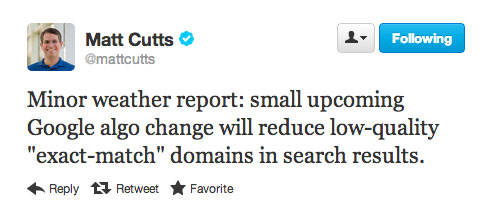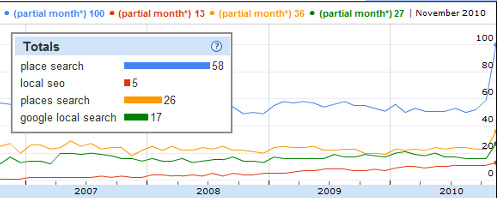First of all a big “thank you” for every one who participated. As I
said before the number of entries surprised me (and the quality as well,
I will definitely apply some of those tips myself).
Now, without further delay, the 30 Traffic Generation Tips:
1. Sridhar Katakam
Keep track of blogs and leave comments on them. A good way to keep the conversation going is to install a MyBlogLog widget and visit the blog of people visiting your site.
2.
Ian Delaney
Nothing creates long-term traffic more than value. Consider writing
posts with resources or explaining how things work. Useful things get
linked to and they get onto del.icio.us, which is far better long-term
than a digg front page.
3.
Scott Townsend
Inform search engines and aggregators like Technorati (using the ping
functionality) when your blog is updated, this should ensure maximum
traffic coming from those sources. (check the
List of Ping Services)
4.
Kyle
Simplify. Pay attention to complex issues in your field of work. It
may be a big long publication that is hard to wade through or a concept
that is hard to grasp. Reference it and make a shorter “for dummies”
version with your own lessons learned and relevant tips. When doing
this, I have been surprised to find that the simplified post will appear
before the more complex version in search results. Perhaps this is why
it results in increased traffic; people looking for more help or
clarification on the subject will land on your blog.
5.
Grant Gerver
Try to be polemic. I write obsessively about all-things political from
the left-wing perspective in the form of humorous, sarcastic one-liners.
6.
Daniel
A simple tip that will probably boost your page views: install a
translator plugin.
I decided to use a paid plugin for this, but if I am not wrong there
are some free ones as well. The translation is not very good, as you can
imagine, but it helps to attract readers that are not fluent in
English.
7.
Rory
Submit articles to blog carnivals (
http://blogcarnival.com) that are related to your niche. Your article almost always gets posted, and it must generate a handful of visitors, at least.
8.
Ramen Junkie
Newsgroups. I always see a spike when I post a review to a newsgroup.
9.
Eric Atkins
Create a new design for your website. Not only will it be more
attractive to your regular readers, but you can submit it to some CSS
gallery showcase sites that feature great designs. This will give you
exposure on those sites while generating a lot of traffic and backlinks
from those types of sites.
10.
Megan Taylor
Participate in conversations on related blogs. Start conversations on
your own blog. Don’t just post about a story and leave it at that,
engage your audience, ask questions and call to action.
11.
Guido
Comment on blogs, write useful content and make good friends on forums.
12.
Brian Auer
You must be active to generate traffic. I post comments on other blogs
that are related to mine, and I post my site link in my signature at the
forums. Spread the word about your blog and it will certainly attract
readers.
13.
Shankar Ganesh
Just browse around MyBlogLog.com and you will surely get visitors to
your blog. Also try to join as many communities as possible that are
related to your topic.
14.
Andrew Timberlake
A great tip for generating traffic is off-line by including your url in
all your off-line liturature from business cards, letterheads,
pamphlets, adverts through in-store signage if applicable. I even have
our website on my vehicle.
15.
Cory OBrien
Read lots of other blogs. Leave trackbacks. Make sure your blog is
optimized for search engines. Leverage social bookmarking sites like
digg (both for new ideas and for traffic).
16.
Jester
Leave comments on other blogs. If you’re already reading them, it takes
just a couple of seconds to leave a message agreeing or disagreeing
with the author, you get to leave a link to your site, and you will almost
ALWAYS get traffic from your comments.
17.
Goerge Manty
Post 3-5 times a day. Use ping services like pingomatic or set up
wordpress to ping some of the ping services. Engage your readers. Put up
polls, ask them questions, give them quizes, free tools, etc. Make them
want to come back and tell their friends about you.
18.
Engtech
Community. It’s one word but it is the most important one when it comes
to blogging. The only “blog metric” that makes sense is the vibrant
community of readers it has. Building a community around your blog will
bring you increased traffic, but how do you start? The boilerplate
response to building traffic is always “
SEO, social networking sites,
and commenting on blogs” but it can be simplified to “be part of a
community”. The easiest way to seed your blog is with an already
existing community. But the only way to do that is to be part of the
community yourself.
19.
Chris
Squidoo Lenses are a good way to generate traffic. By using a lense,
you can generate your own custom “community” of webpages, including some
of the more popular pages in your “neighborhood.” Including your own
webpage in such a list is a good way of generating traffic.
20.
Splork
I’ve had good success writing articles and submitting them to
EzineArticles. Articles that have been written from well-researched
keyword phrases and accepted by EzineArticles tend to rank very high in
Google for that search term. Placing anchor text in the footer of those
articles so the reader can visit my relevant website has always
increased my site traffic.
21.
Jen Gordon
I came upon some unexpected traffic when my blog popped up on some css
design portals like www.cssmania.com and www.webcreme.com. If you can
put some time into the concept behind and design for your blog, I’d
recommend submitting your site to a design portal not only for
additional traffic but to build an additional community around your site.
22.
Kat
I’ve recently gotten involved with several “MySpace-like” community
sites that focus on my target audience. I share my thoughts in their
forums, post intros to my real blog on their system blog and I’ve even
created a group for my specific niche. It’s been very, very successful
for me.
23.
Inspirationbit
Well, obviously everyone knows that social bookmarking sites like Digg,
del.icio.us, etc. bring lots of traffic. But I’m now submitting some of
my articles to blogg-buzz.com (a digg like site for bloggers), and I
always get not a bad traffic from there.
24.
Mark Alves
Participate in Yahoo Answers and LinkedIn Answers where you can
demonstrate your expertise, get associated with relevant keywords and
put your URL out there.
25.
Tillerman
Be the first to write a post about the ‘Top Ten Blogs’ in your niche.
The post will rank highly in any general search for blogs in your niche
and other bloggers in your niche write about the post and link to it.
26.
Nick
Participating in forums is a great way to get loyal readers. Either link
baiting people in your signature or posting great advice and tips will
give you high quality traffic, which will result in return visitors.
27.
Brandon Wood
A simple trick I’ve used to increase traffic to my blog is participate
in group writing projects. In fact, that’s what I’m doing right now.
28.
Alan Thomas
Don’t forget your archives. I just posted a roundup of all interviews I
did over the past seven months. One of them generated a new link and a
big traffic spike from a group of users that look like they will be
loyal readers now.
29.
KWiz
Write something controversial. I don’t think it’s good to write
something controversial just for the purpose of getting traffic
necessarily (especially if it’s only for that purpose and you’re being
disingenuous), but it works.
30.
Dennis Coughlin
Find the best blogs on your niche and contact the authors. Introduce
yourself and send a link of your blog. This might help them to discover
your blog, read it and possibly link to it.
Article post By: http://www.dailyblogtips.com/traffic-generation-tips-final-list/


 How Periodic Updates Work: The Panda Example
How Periodic Updates Work: The Panda Example
